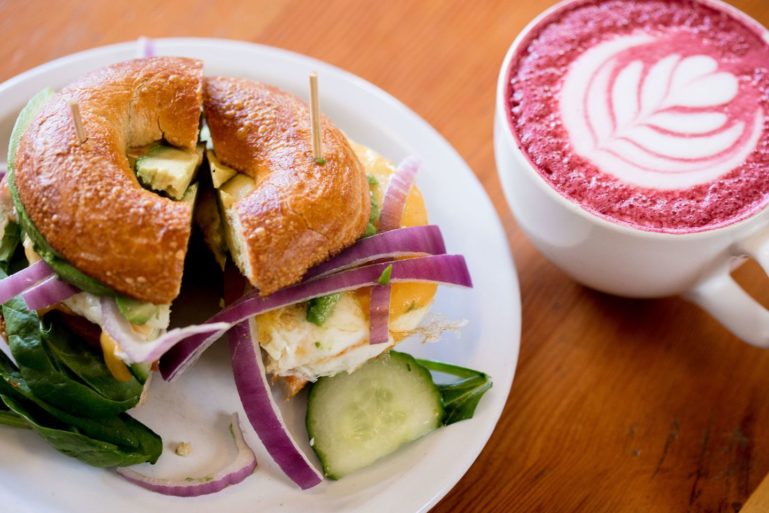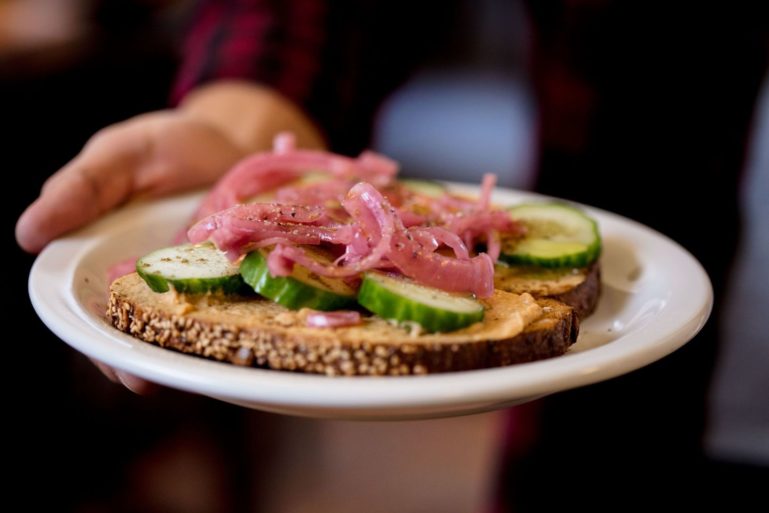
How to Manage a Restaurant Kitchen Efficiently
Restaurant kitchens are notoriously challenging. From keeping up with customer demands to prepping ingredients and managing staff, a lot goes into keeping your kitchen up to par.
As most experienced restaurant owners are well aware, what goes on in the kitchen often contributes to the success of the rest of the restaurant; when the back-of-house (BOH) is running like a well-oiled machine, the front-of-house (FOH) usually does too. Consequently, when things in the back of the house start to fall apart, the rest of the restaurant often follows suit.
A well-managed kitchen can be a considerable benefit, satisfying your customers with delicious food and ensuring a seamless service. Here’s what you need to know about how to manage a restaurant kitchen efficiently.
Pay Attention to Inventory
Hands down, inventory matters. When your restaurant isn’t adequately stocked, your crew will have a hard time adequately preparing food and serving patrons.
Although managing inventory can seem like a burden, all the counting, tracking, and ordering inventory is exceptionally time-consuming when done by hand — but it’s essential. Luckily, the right technology can make a difference. A Point of Sale (POS) system with inventory management features that can track ingredients or raw goods of menu items.
There’s more to the cost of that margarita pizza you serve. There’s the cost of the dough, fresh tomatoes, sauce, basil, and let’s not forget the garlic and cheese. Accounting for these granular details will give you genuine insight into food costs and profit margins.
SEE ALSO: How to Calculate Food and Beverage Cost: Know Your Dough
Menu Management
Your inventory means a lot, but what you order and when you order it is highly dependent on your menu. An expansive menu with dozens of dishes often requires more inventory and a higher likelihood of food going bad before use. On the other hand, a more focused menu where common ingredients are shared between menu items is much easier to manage.
If you have trouble narrowing it down, look at your POS system should have a best and worst sellers report so you can see what items are worth keeping and what ones you can eighty-six. Use this information and work with your head chef to streamline your offerings by cutting less popular dishes and creating a unified menu that speaks to your restaurant’s overall objectives.

Provide the Proper Equipment
A great menu and seamless inventory orders don’t mean much when your kitchen staff doesn’t have the right tools for the job.
Kitchen equipment can be costly — stoves and ovens, for example, can run thousands of dollars for a single item — but your kitchen isn’t the place to cut corners. Inefficient or broken equipment makes it harder to cook, slowing down the process and potentially negatively affecting quality.
Take time to shop around for restaurant suppliers to find discounts and deals to ensure you can get everything you need without breaking the bank or hindering the quality and efficiency of your final product.
SEE ALSO: A 6-Step Equipment Checklist for Bootstrap Restaurateurs
Focus on People
The people in your kitchen mean more than anything else. Cooks and chefs with lacking knowledge, a poor attitude, or inadequate tools and training can sink even the best restaurants. Before setting out to get that Michelin Star — or just a great review in the local paper — make sure your team gets the training, support, and resources necessary to succeed.
Hire Effectively
Hiring a quality kitchen staff should be a top priority. Without a knowledgeable team behind the line, you’re unlikely to fire tickets on time, complete dishes correctly, or provide customers with a great dining experience.
When hiring an employee, focus on those with reliable track records and an eagerness to learn. It’s not uncommon for kitchen staff to move around frequently, so job hopping isn’t always a bad sign. Just be sure everyone you employ has a solid history, decent references, and no major red flags.
Interview everyone thoroughly and if appropriate, provide cooking tests to verify abilities. These tests can be simple, like asking a candidate to make a recipe off your menu, or more complicated, like a request for a signature dish.
Also, make sure you have enough staff. Make sure you have line cooks, chefs, food runners, expediters, and dishwashers; any missing piece can throw your whole system off kilter.
Train and Cross-Train Employees
Before setting your new hires free on the line, make training a priority. This process can include:
- Menu books
- Detailed lists of processes and procedures
- Shadowing other employees
- Test meals as part of a pre-show gathering
Most cooks will require anywhere from one to four weeks of training before flying solo, so be sure to dedicate ample time to prepare them and set them up for success.
Specialists are essential in the kitchen, but a skilled chef can cook almost anywhere. Rather than keeping your team members in one place or on one station for all shifts, ensure everyone knows a little of everything.
The grill cook should be able to take over in salads, and the fry cook should be able to cover on sauté when times get tough. The more everyone knows, the more likely your team is to pull together during the busiest of services.
Keep Up Morale
As the adage goes, if you can take the heat, get out of the kitchen. A kitchen can be a tough place. When dinner service gets going, orders start flying in and things start running behind, it’s only natural for emotions to be at a high. Instead of ignoring it and assuming everyone will calm down in time, be available for your staff as much as possible. Jump in to help when you can, listen to complaints and concerns, and respond appropriately rather than letting your team work things out alone.
As a manager or owner, it’s your job to be supportive and provide the best environment possible. Do your best to boost morale by keeping everyone active, engaged, and enthusiastic.
Schedule Properly
Who and how you schedule can make an extraordinary difference in the efficiency of your kitchen. Being short-staffed can sideline even the best menu and ruin your reputation and drive customers away. When you take the right approach to scheduling, primarily when you utilize an employee scheduling app, you can be sure you’re adequately prepared for anything dinner service may have to offer.
Staffing the Line
Staffing in your kitchen shouldn’t be arbitrary. Instead, it’s important to take into account ebbs and flows in business and schedule accordingly. For example, you should have more people on the line on Saturday night than a Tuesday night.
When scheduling, work to find the sweet spot between adequate team members to turn a profit and enough coverage still to ensure no station falls behind. Your POS system can help with this by tracking sales trends,. This ensures you know exactly who you need and when you need them. It may be tempting to cut staffing to save a few dollars but try to refrain. In many cases, the financial benefits won’t outweigh the disadvantages to workflow.
Plan Prep Ahead of Time
Prep can be deceptively time-consuming, especially for restaurants that make a significant portion of the menu from scratch. Many kitchens start prepping five to seven hours before service begins to get everything done in time.
Rather than scheduling cooks to come in around lunch and hope everything gets done, stay as organized as possible to make sure everything gets done on time Create in-depth prep lists based on sales history, targets, and trends, so you know how much you need to prep. Thus, how much time it will take to prep.
Lastly, make prep work a joint effort instead of assigning tasks to make sure all jobs are completed before service begins.
SEE ALSO: 10 Restaurant Management Apps We Love and You Will Too
All Hands on Deck
During the dinner rush, it’s easy to assume your talented kitchen team can handle things alone. However, when unusual circumstances arise like several simultaneous parties or no-call no-shows, it’s important to be proactive.
As a manager or owner, you’re effectively a jack of all trades. When things start falling behind, or your team is unable to meet current demands, it’s up to you to take action. This may mean running food to clear the window, jumping as the dishwasher to get caught up on glassware, or stepping behind the bar to and making some cocktails. When you’re willing to lead by example, others will follow.

Implement the Proper Tools
We mentioned POS systems at the beginning of this article in regards to inventory management, but it applies here as well.
While hand-written tickets are still in vogue in some restaurants, a POS system can make a big difference in efficiency of communication between the front-of-house (FOH) and back-of-house (BOH). When a server punches an order into the POS system, it’s delivered to the kitchen instantly via a kitchen printer. The printer spits out an easy to read ticket (no squinting or handwriting guesswork), so the chef can start preparing the food.
An iPad POS system like ShopKeep offers the ultimate in flexibility, allowing orders to be sent directly to the kitchen in a few simple taps. With a fully customizable interface, servers can ring in precisely what a customer wants, including any changes like ingredient substitutions and modifiers. With accurate information, your kitchen staff can minimize mistakes food waste.
Keep Standards Up to Par
As the adage goes, cleanliness is next to godliness. While this may be an exaggeration, but cleanliness in the kitchen is paramount — ask anyone who has ever got a bout of food poisoning from a less than clean restaurant. Your adherence to the Food and Drug Administration (FDA), federal, state, and local food service standards will keep your customers healthy and your restaurant less susceptible to fines or citations.
Health department inspections can happen at any time, so it’s important to stay on your toes by staying on top of the following:
- Pay close attention to potential cross-contamination and employing safety measures to prevent violations.
- Cleaning checklists to be completed daily and weekly.
- Conducting self-evaluations at random, unscheduled times to ensure your kitchen staff is on top of health department requirements.
- Employee quizzes to evaluate decision-making abilities and judgment regarding safety and sanitary issues.
- Regular monitoring of food handling and preparation.
Mastering Management
Management is never easy, no matter how much experience you have, but the right preparation can make a difference. With proper tools, training, and resources, you can learn everything necessary about how to manage a restaurant kitchen efficiently.
Want to try ShopKeep for yourself?
Just answer a few easy questions.
Need help finding the right point of sale?
Just complete the form. We’ll call you right back to explain how ShopKeep can work for you.
Hit the ground running.Sprinting, in fact!
Read our free, comprehensive guide, Small Business 101, to learn all you need to know about starting a thriving business.

